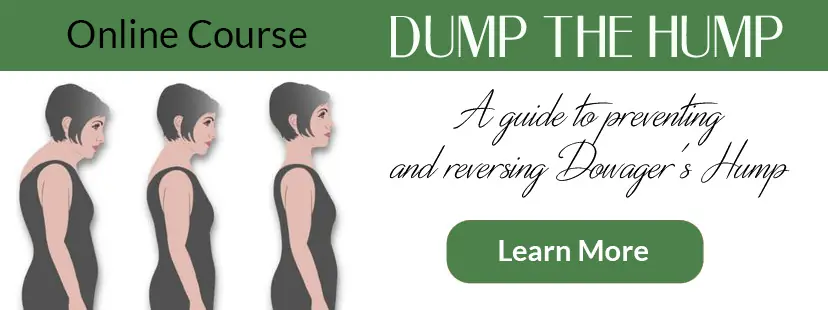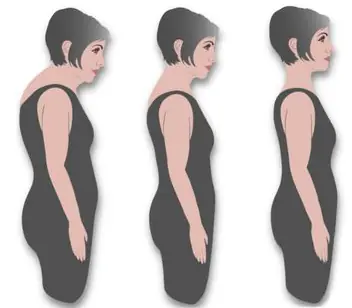You know the signs of Dowager’s Hump when you see them in an older woman or man—a bending forward from the upper spine, their heads and necks protruding at an angle from their shoulders, and depending on the severity, they shuffle more than step, as their equilibrium is thrown off.
Ask yourself these exploratory questions:
- Do I have pain and stiffness in my upper spine?
- Do I have trouble turning my head?
- Perhaps pain in my lower back or hips?
- Or, in more severe cases, difficulty in swallowing?
If you answer yes to most, or any, of these questions, you might be suffering from hypokyphosis, commonly known as Dowager’s Hump.
Most often with Dowager’s Hump there is a loss of bone mass and density in the vertebras of the spine which causes compression, creating deformities in the corresponding discs. Another name for this is osteoporotic Dowager’s Hump.
Common Causes of Dowager’s Hump
Absent of a history of trauma, osteoporosis is the most common cause of Dowager’s Hump. Lack of muscle mass, from not exercising regularly, is often the root cause of both. An x-ray of your spine can detect osteoporosis or other conditions that may cause this unnatural curvature of the upper spine.
Something called Ankylosing Spondylitis, along with other types of inflammatory arthritis may also lead to changes in the spine that look similar to Dowager’s Hump. With AS, as with osteoporotic Dowager’s Hump, there is often pain and stiffness. Herniated discs (discs that become inflamed and bulge out of place along the spinal column), can also contribute to upper spine curvature. A person with either of these conditions will experience the effects of Dowager’s Hump—the loss of balance, disorientation, and a tendency to have a shortened and abbreviated gait.
Diagnosing Dowager’s Hump
My best advice is to start with a visit to your physician. She will most likely order a set of x-rays to evaluate the situation. Blood tests can detect systemic issues contributing to the problem.
A variety of therapies or medications might be recommended. Before you go down the path of pharmaceuticals or invasive treatments, give my class, Dump the Hump: Reversing and Preventing Dowager’s Hump a try for the recommended period of 12 weeks, and then reassess. With regular, consistent practice of the suggestions and exercises you will learn, studies show a marked improvement in the curvature of the upper spine.
You will stand taller, feel better, and be more vibrant as you add years to your life.
Until next time…Be Vibrant!


